Exploring New Technologies in Oil and Gas Drilling
The oil and gas industry has long been at the forefront of technological innovation, constantly seeking ways to enhance efficiency, safety, and environmental sustainability. In recent years, advancements in technology have played a pivotal role in transforming the landscape of drilling operations.
Key New Technologies in Oil and Gas Drilling
The oil and gas industry is undergoing a profound transformation, compelled by the imperatives of efficiency, safety, environmental responsibility, and cost reduction. As the industry embraces these challenges, an array of cutting-edge technologies is emerging, ushering in a new era of innovation in drilling operations. Here’s a closer look at some key players in this technological revolution.
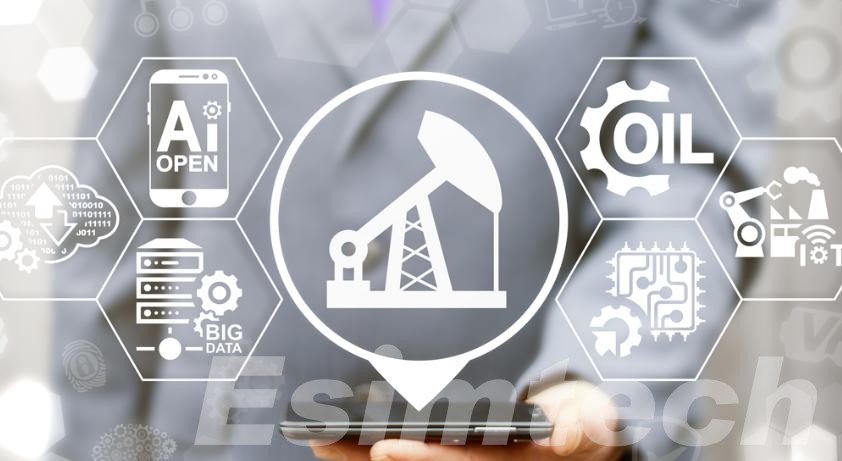
Artificial Intelligence (AI):
- Predictive Maintenance: AI has revolutionized equipment maintenance through predictive analysis of sensor data. By anticipating equipment failures, AI helps prevent costly downtime and enhances safety by allowing proactive intervention.
- Real-time Optimization: AI algorithms analyze drilling parameters in real-time, suggesting adjustments for optimal performance. This not only maximizes yield but also minimizes the environmental impact by optimizing drilling processes.
- Reservoir Characterization: AI assists in interpreting seismic data and geological formations, leading to more accurate resource assessments. This targeted approach to drilling minimizes exploration risks and enhances resource recovery.
Robotics and Automation:
- Remote-Operated Drilling: Robots are increasingly handling perilous tasks like wellbore inspections and maintenance. By reducing human exposure to risks, remote-operated drilling contributes to improved safety and operational efficiency.
- Automated Drilling Rigs: Drilling platforms with minimal human intervention are becoming a reality. Automated drilling rigs enhance efficiency, reduce costs, and ensure consistent and precise drilling operations.
- Subsea Robotics: Robots designed for subsea operations perform complex tasks underwater, enabling exploration and production in challenging environments. These technologies extend the reach of drilling operations into deeper and more remote areas.
Data Management and Analytics:
- Big Data Platforms: The oil and gas industry is utilizing big data platforms to collect and analyze vast amounts of data. This includes information from sensors, drilling operations, and geological surveys, providing valuable insights for informed decision-making.
- Cloud Computing: Cloud-based data storage and processing offer scalability, accessibility, and real-time analysis capabilities. This facilitates collaborative efforts, allowing stakeholders to access crucial data from anywhere in the world.
- Digital Twins: Virtual replicas of physical assets, such as rigs and wells, enable the industry to test various scenarios, optimize operations, and predict performance. Digital twins are instrumental in improving efficiency and minimizing risks.
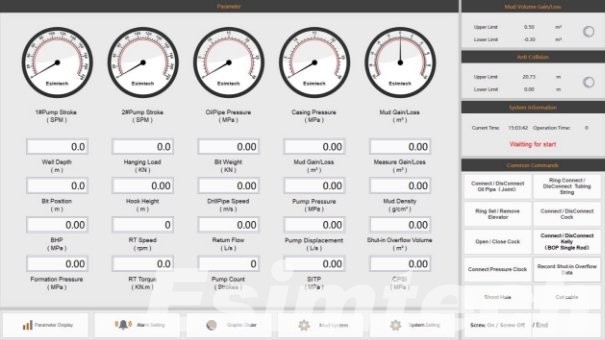
Advanced Drilling Technologies:
- Horizontal Extended Reach Drilling (HERD): This technique allows drilling over long distances horizontally from a single wellbore, unlocking reserves that were once considered unreachable. HERD enhances resource recovery and reduces the environmental impact of drilling.
- Autonomous Downhole Tools: Tools equipped with autonomous capabilities perform tasks like cleaning, inspection, and data collection within the wellbore. This eliminates the need for frequent wireline interventions, improving efficiency.
- Laser Drilling: Laser drilling employs lasers to vaporize rock formations, offering a cleaner and more precise drilling method. This technology holds the potential to revolutionize drilling practices, making them more environmentally friendly.
Environmental Technologies:
- Carbon Capture and Storage (CCS): CCS technology captures CO2 emissions from drilling operations and stores them underground, contributing to a significant reduction in the industry’s carbon footprint.
- Methane Emissions Reduction: New technologies focus on capturing and utilizing methane leaks during production, mitigating their environmental impact. This helps address one of the industry’s most potent greenhouse gas emissions.
- Bioremediation: Microorganisms are employed in bioremediation to clean up oil spills and contaminated sites. This sustainable remediation solution aligns with the industry’s increasing focus on environmental responsibility.
Generally, the integration of these key technologies is reshaping the oil and gas drilling landscape, driving the industry towards a more efficient, safer, and environmentally conscious future. As these technologies mature and become more widespread, the oil and gas sector is poised to meet the challenges of the 21st century head-on, ushering in a new era of sustainable energy exploration and production.
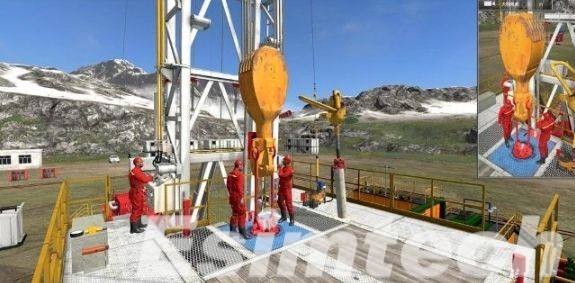
Specific Technologies for Oil and Gas Drilling Training
In the realm of drill training, the integration of immersive technology stands as a strategic tool to achieve specific training objectives. At the heart of a drilling simulator lies a triad of components, each designed with precision to contribute to a focused and effective learning experience.
1. Intuitive Control Panels:
The core functionality of drilling simulators is centered around replicating the layout and functionality of authentic rig controls. Intuitive control panels precisely mimic real-world interfaces, enabling trainees to develop a comprehensive understanding of the equipment and procedural nuances. By emulating the controls found on drilling rigs, these panels facilitate the development of muscle memory and procedural familiarity. Trainees engage in repetitive exercises, promoting a tactile understanding of the control systems, fostering efficient decision-making during actual drilling operations.
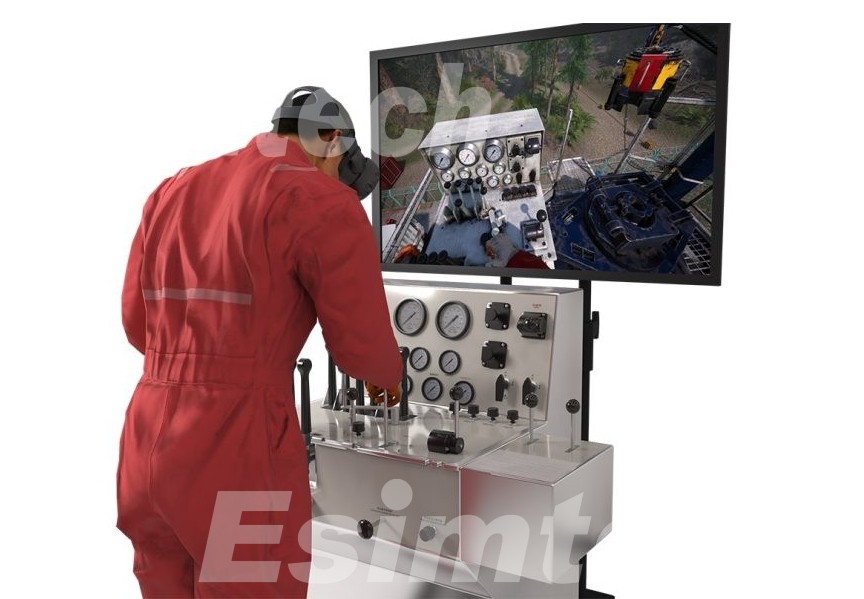
2. Captivating Visuals:
Visual elements within drilling simulators immerse trainees in realistic virtual environments. These environments faithfully replicate diverse geological scenarios, providing trainees with exposure to a spectrum of drilling challenges without the associated risks. Trainees navigate through visually engaging scenarios that span routine drilling to emergency situations. This scenario-based learning approach ensures a practical understanding of drilling challenges, allowing for hands-on practice within a controlled and safe simulation environment.
3. Powerful Software Engines:
The driving force behind drilling simulators is their sophisticated software engines, meticulously crafted to replicate drilling dynamics with accuracy. These engines simulate the intricate physics of drilling operations, offering a nuanced understanding of cause-and-effect relationships. Software engines mirror real-world cause-and-effect relationships, providing trainees with insights into the consequences of their decisions. This dynamic simulation fosters a deeper comprehension of the interconnected systems at play in drilling operations, enhancing the ability to make informed decisions during practical applications.
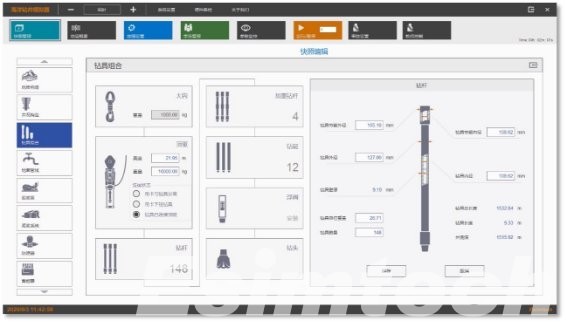
The amalgamation of these three components aligns with the overarching objective of drilling simulator technology – to create a focused and immersive learning environment that addresses specific training needs. This objective approach ensures that trainees not only acquire theoretical knowledge but also gain practical skills essential for the efficient execution of drilling operations.
This tripartite integration isn’t just about virtual replication, it’s a targeted strategy to meet specific training outcomes. As immersive technology continues to evolve, the continued integration of intuitive control panels, captivating visuals, and powerful software engines in drilling simulators will persist as a strategic means to cultivate a proficient cadre of drill operators capable of meeting industry demands with competence and confidence.
The Impact of New Technologies in Oil and Gas Drilling
The evolving landscape of oil and gas exploration is characterized by a shift from traditional drilling rigs to a technologically advanced era. This transformation brings forth a spectrum of possibilities and challenges for the industry.
Advancements such as artificial intelligence (AI) optimization, robotic task automation, and advanced data analysis are heralding positive changes. These innovations offer the prospect of heightened operational efficiency, enhanced worker safety, and a potential reduction in the industry’s environmental impact. Envision drilling rigs equipped to predict equipment failures proactively, underwater robots adept at intricate maintenance tasks, and data platforms guiding drillers toward optimizing yields while minimizing ecological consequences. The potential for revolutionary change is palpable.
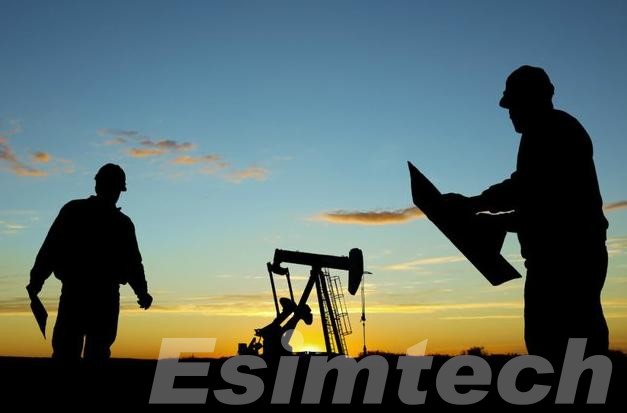
However, this transformative journey is not without its complexities. Automation raises concerns about job displacement, particularly impacting lower-skilled workers. Ethical considerations surrounding data privacy and potential biases in AI algorithms require careful scrutiny. The substantial upfront costs associated with implementing these technologies may pose challenges, particularly for smaller industry players. The landscape is further complicated by cybersecurity threats, necessitating the adaptation of regulations to safeguard against potential vulnerabilities.
The impact of these technological advancements hinges on a delicate equilibrium. Embracing the potential for efficiency, safety, and environmental responsibility is paramount, yet it necessitates a simultaneous effort to mitigate the risks associated with job displacement, ethical concerns, and accessibility barriers. A balanced and responsible approach involves fostering open dialogue and collaboration among industry stakeholders, academic institutions, and policymakers. Only through such cooperative efforts can these transformative technologies be effectively integrated, ushering in a future for the oil and gas industry that is both sustainable and equitable. This transition signifies a departure from the traditional image of clanging machinery and a grime-laden environment to a more data-driven, efficient, and responsible
Conclusion
The oil and gas industry’s adoption of new technologies in drilling is transforming the sector in unprecedented ways. From automated drilling systems to virtual reality simulations for training, these innovations are enhancing efficiency, safety, and sustainability. As technology continues to evolve, the industry is poised for further advancements, ensuring a more resilient and future-ready approach to oil and gas drilling.

